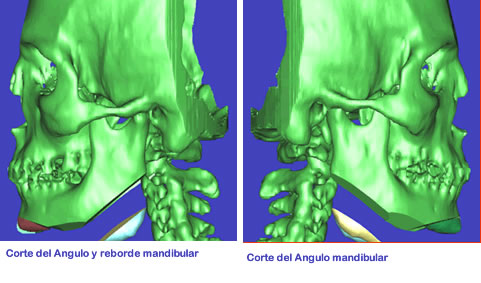Mandibular Reduction or Jaw Feminization
Male and female jaws differ in size and projection. In many cases, women with prominent jaws have rugged and dominant faces, but they could never be considered men, as they have other features that feminize their faces. However, in a trans-woman, a prominent jaw hinders her facial harmony, masculinizing her face.


Several studies have proven that front views of female jaws show they are narrow and triangular and end in a delicate and fine chin. On the other hand, most men have a wider, square jaw that ends in a more prominent chin. These are the most striking differences when comparing the faces of both sexes.
Mandibular angles and ridges
To reduce face projection and width, the surgeon will gain access to the mandibular bone through intraoral incisions that will not leave any visible scars, cutting the angles and shaping a rounder and more delicate ridge. In some cases, it is also necessary to reduce the masseter muscles. Mandibular edges are milled and, to give continuity to the mandibular reduction, this procedure is combined with a chin feminization or reduction.


Hospitalization, anesthesia and recovery
One day at the clinic is more than enough to recover from this surgery which is performed under general anesthesia. The patient must receive specific post-operatory care; the surgeon will place bandages which will be removed the next day, and you will only be able to ingest liquids. In the next days, you must eat a soft diet, as you cannot chew food. You must have a consistent and appropriate oral hygiene to avoid infections. For one week, you may only ingest determined food and, after some weeks, your wound inflammation and jaw swelling will subside gradually, and you will be able to chew whatever you want. The end results of this surgery may be appreciated after five months.
Complications
Asymmetries: with a trained surgeon, they are unlikely to happen and are corrigible.
Infections.- All our patients are medicated with the respective antibiotics, according to the type or surgery they have undergone. This prevents any type of infection and reduces the possible infections of the procedure to a minimum.
Damaged nerves that could paralyze some treated parts.
– Adverse reactions to anesthesia.
All patients must go through a pre-surgical process, and must undergo the following tests:
– Complete blood and urine tests, radiology, cardiology, and pulmonology tests, among others. These tests reduce the possibility of irregularities during surgery and subsequently.

